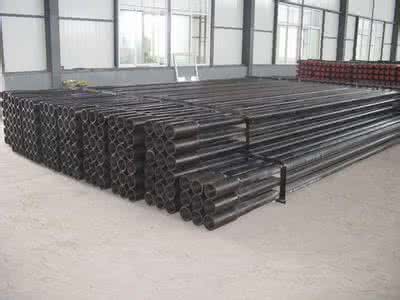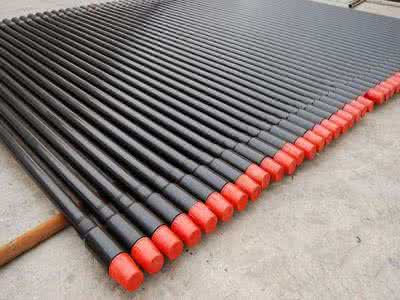The production process of oil drilling rod is divided into three parts
Release date:2017-09-06 Author:http://www.z-1.net.cn/ Click:
China's drill pipe production began in 1990s, and drill pipe production generally includes three parts: pipe end thickening, tool joint processing, friction butt welding and subsequent processing.
Tube end thickening
The pipe material of the drill pipe is low carbon alloy steel. The continuous casting and rolling round steel billet is heated through a large rotary furnace and then enters the extension machine and the mandril automatic piercer. After heating, the inner and outer diameter is fined and straightened into the pier forging process. Because the weld part of the drill pipe is the weakest link in the operation process. The seamless tube must be thickened at the two ends of the pipe before welding, so as to increase the thickness to improve the strength of the weak part, so that the overall strength of the weld area is greater than that of the pipe body. According to the diameter of the pipe, it is divided into 3 types: internal and external thickening, internal thickening and external thickening, among which the internal and external thickening type is the main type. The first is the process of pipe end upsetting of seamless pipe end for heating and heat; the second is to hit the pipe end with pier hydraulic or pneumatic way, the outer surface by molding, the inner surface temperature gradient by natural molding; finally, the whole body heat treatment pipe straightening, flaw detection check. The key technology of tube thickening is the forming of inner surface transition zone, because the location is weakest and the force is most complex. About 70% accidents happen in this area, so the quality of drill pipe is very important.

Tool joint processing
The material of the tool joint is usually made of medium carbon alloy steel. After heating, the blank is divided into three forms, and after normalizing, it is machined. The blank hole, the outer circle and the end surface of the turning process, followed by quenching and tempering heat treatment on the joint to obtain the integrated mechanical properties. Finally, the thread processing of joints, threaded part to copper or phosphating treatment, to prevent the process of using gluing phenomenon.
The quality of the joint is the two key processes of heat treatment and thread processing. Heat treatment directly affects the mechanical properties of the joints, so the drill pipe factory adopts the advanced automatic continuous controllable atmosphere heating, oil or water base quench, the atmosphere reduction joints in heating process, guarantee the workpiece without oxidation, decarburization and carburization. After the joint quenching and tempering, the surface hardness test and magnetic particle flaw detection are carried out one by one. After heat treatment, the thread is thread processing, the drill rod thread is the taper thread of the rough tooth. In the connection process of the drill rod, the thread plays a key role. Therefore, most of the thread processing is carried out by high-precision CNC machine tools. Thread joints, such as thread pitch, pitch, taper and tooth height are measured one by one, so as to ensure the thread type and accuracy requirements, thereby ensuring the connection performance of drill pipe joints.

Friction welding and subsequent treatment
Friction welded drill pipe is an important part of the whole pipe production, in order to ensure the quality of welding pipe factory is used by almost all automatic friction welding machine, and is equipped with welding parameter monitoring device of friction welding process time, friction pressure, forging force, forging time and shorten the parameters automatically monitor and record, so as to ensure the welding quality. After welding, the welding burrs should be removed, and the welding heat affected zone is tempered, and the weld is inspected nondestructive. The quenching and tempering heat treatment of the weld is very important. Almost all manufacturers use the intermediate frequency heating method, and the parameters such as heating temperature, heating time, holding time and quenching time are automatically recorded. The advantages of the weld heat treatment are: narrow heating zone, short heating time, uniform and stable welding area, reliable performance, and small residual stress on the welding area.




